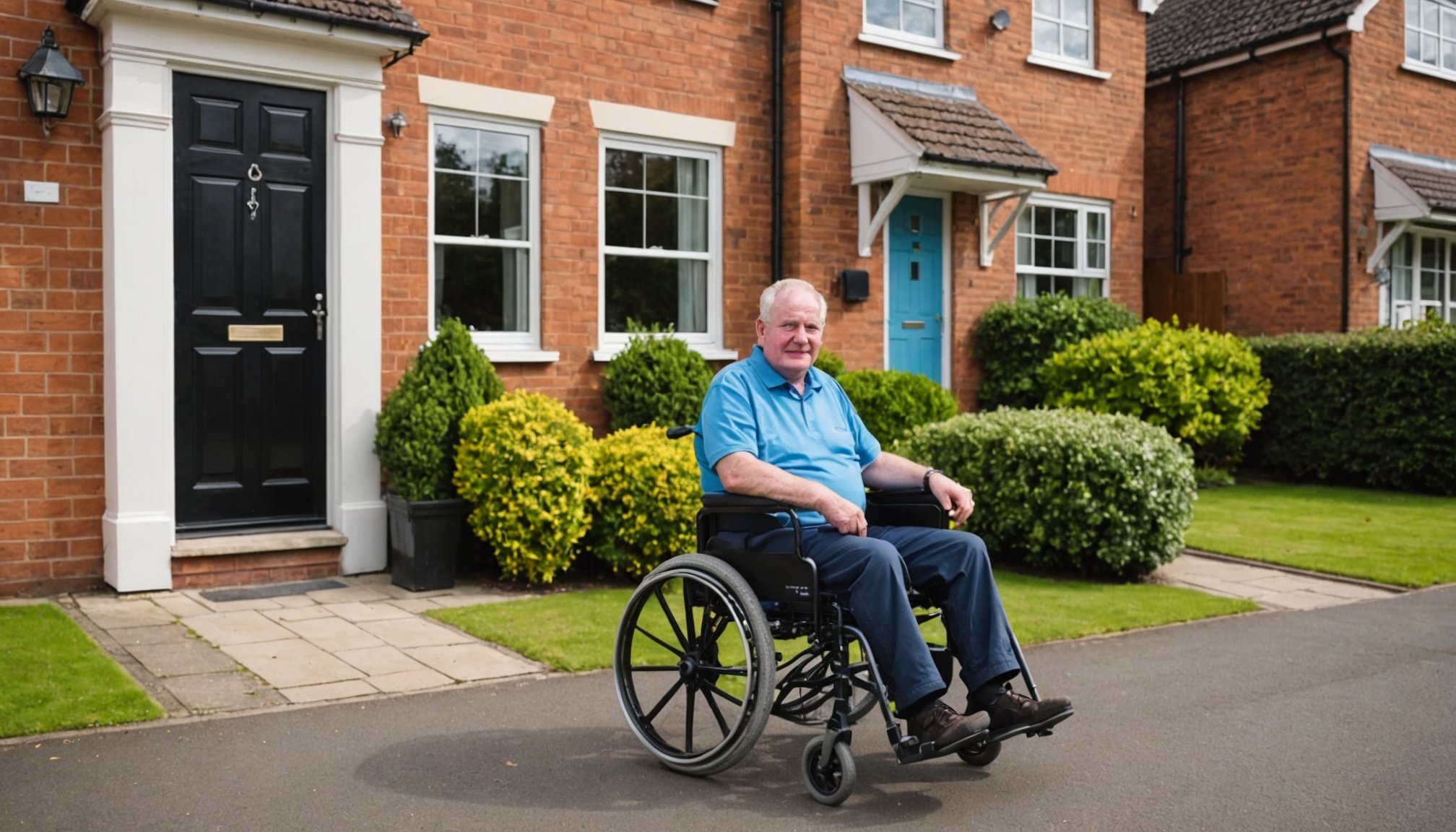Understanding Accessibility Needs
Navigating accessibility requirements is crucial, particularly when identifying the needs of individuals and families. Each person’s circumstances and the environment they interact with can vary significantly. Ensuring that specific requirements are addressed can vastly improve the living situation, especially during significant changes such as relocation.
Mobility challenges are common, especially among residents with disabilities. These challenges can include navigating stairs, accessing certain rooms, or handling everyday tasks that require ease of movement. Understanding these aspects allows for a more comprehensive evaluation of any potential living spaces, ensuring they meet the necessary standards for accessibility.
A voir aussi : Uncovering the Hidden Expenses of Relocating in Scotland: Tips to Sidestep Surprises!
Effective awareness of needs plays a pivotal role here. Open communication about specific requirements is vital, especially when relocating. It ensures that all parties involved are on the same page regarding what modifications or accommodations might be necessary. This proactive approach helps prevent potential misunderstandings and ensures a smoother move.
Key accessibility considerations could involve:
A découvrir également : Top Insulation Solutions for Safely Packing Boxes During Your Winter Move in the UK
- Installing ramps or elevators where necessary
- Modifying door widths for wheelchair access
- Installing support bars in bathrooms
Communication and awareness of these needs lead to safer and more comfortable living conditions, emphasising the importance of addressing accessibility needs throughout the relocation process.
Property Features for Accessibility
When ensuring a home is wheelchair accessible, attention to detail in home design is crucial. A few key features make a significant difference in accessibility. Ramps, instead of stairs, provide a seamless entry, allowing easy navigation for all. Wide doorways, ideally 32 inches or wider, accommodate wheelchairs, offering independence and ease of movement throughout the home.
Consider the benefits of single-level living in creating an accessible environment. This eliminates the struggle of stairs, allowing individuals to move freely without barriers. For bathroom accessibility, features such as roll-in showers and grab bars enhance safety and convenience, crucial for those with mobility challenges.
Adopting universal design principles is beneficial in home construction. This approach ensures spaces are inherently accessible to everyone, regardless of ability. By integrating these principles, homes become inclusive, promoting comfort and functionality. Elements such as lever-style door handles and touch-control faucets further simplify everyday tasks.
Incorporating these accessible home features not only enhances the quality of life for residents but also future-proofs the property, making it a welcoming space for all. This thoughtful approach to home design serves the needs of today while anticipating those of tomorrow.
Local Amenities and Services
Navigating local accessibility services is crucial in determining the quality of life for residents, especially for those with specific needs. Evaluating the proximity to healthcare facilities is a significant factor, as it ensures that urgent medical care and ongoing treatment are easily accessible. For those relying on disability services, understanding the range and location of these offerings within the community is essential.
Another key aspect to consider is the availability of accessible public transportation. Public transport that accommodates individuals with disabilities enhances community amenities by making movement within the area more convenient. This not only facilitates access to healthcare but also bolsters independence and integration within the wider community.
Reviewing local community centers and recreational facilities highlights their role in fostering social interaction and physical activity. Ensuring that these venues are inclusively designed with ramps, elevators, and tactile paths demonstrates commitment to inclusivity. Accessibility within recreational areas enhances community participation and allows everyone to enjoy amenities equally.
By focusing on these factors, individuals can make informed decisions about their prospects in a community. Ultimately, a well-rounded view of accessible amenities ensures that everyone, regardless of ability, can thrive within their local environment.
Legal Regulations and Standards
Navigating UK accessibility regulations and building codes can be pivotal for ensuring properties are inclusive. Under the UK’s legal framework, the Equality Act 2010 plays a crucial role in safeguarding disability rights within housing. Key aspects of this legislation demand that reasonable adjustments are made to ensure accessibility for individuals with disabilities. But what exactly does this mean for property developers and homeowners?
The act primarily mandates that any physical or procedural barriers hindering access should be addressed, enforcing a commitment to inclusivity. Comprehending these nuances is vital for aligning with the legal landscape and avoiding potential compliance pitfalls. Housing providers must actively seek to remove disadvantages faced by disabled individuals in rented properties, thereby fostering an equitable environment for all.
Regarding local building codes, resources such as the Planning Portal (government website) offer guidance on how to adapt structures to meet these requirements. Furthermore, consulting with local councils can provide insights and updates on compliance checks and modifications.
Ensuring adherence to these standards and regulations not only promotes inclusion but also enhances property value and tenant satisfaction. Embracing these standards is not just a legal obligation—it’s a step forward in creating a society that values diversity and accessibility.
Neighborhood Safety and Quality of Life
Understanding your neighborhood’s safety is fundamental when assessing potential areas for relocation, especially for vulnerable populations. Crime rates can significantly impact one’s sense of security and the quality of life. Fortunately, local law enforcement agencies often provide public access to crime statistics. This data is essential for evaluating an area’s safety, allowing you to make informed decisions about where to settle.
Beyond safety, community support systems and social networks play a vital role in enriching the quality of life. Support from local groups can foster a sense of belonging and increase overall well-being. Such networks might include neighborhood associations, local clubs, or support groups that cater to specific needs, offering services and companionship.
When considering a move, it’s also crucial to evaluate the overall quality of life in potential neighborhoods. This includes considering factors such as access to parks, schools, healthcare, and transportation. A vibrant community can enhance daily life by providing amenities and opportunities for social engagement. Seeking areas with robust community involvement can ensure a supportive and enriching environment, ultimately enhancing both safety and quality of life for all residents.
Financial Considerations and Support
Relocating to a more accessible property involves several financial considerations, especially when evaluating housing costs and modifications. Exploring the potential of securing financial assistance can alleviate some of these burdens.
Moving to an accessible home can be a significant financial decision, especially when accounting for new and perhaps higher housing costs. It’s crucial to weigh these expenses against the benefits such a move brings to your daily living situation and quality of life.
For those thinking about modifying their current property, there are various loans for home modifications available. Financial institutions often provide special loans tailored for disability accommodation or home accessibility, ensuring that individuals can finance their needs without immediate exorbitant costs. Additionally, numerous grants aimed at improving home accessibility are offered by governmental and non-governmental organisations. These grants might not require repayment, providing a more straightforward financial relief option.
To further support this transition, robust budgeting and financial planning resources are essential. Planning ahead with a detailed budget can unveil hidden costs and help identify where financial assistance might be most beneficial. Consulting with a financial advisor or using online resources can provide necessary guidance, ensuring you make informed financial decisions during this critical transition.
Personal Testimonials and Case Studies
Real-life experiences offer invaluable insights into the challenges and triumphs faced by families who have relocated for accessibility needs. Their relocation stories provide firsthand accounts of what it takes to find homes that are accommodating and welcoming. For instance, one family shared how moving to a community designed with accessibility in mind significantly improved their quality of life. They highlighted how ramps, wide doorways, and smart home features seamlessly integrated into their daily routine made a huge difference.
In addition to personal stories, case studies exemplify successful adaptations in new homes. These often detail innovative renovations, such as lowered kitchen counters or voice-activated systems, tailored to fit unique requirements. Such adaptations not only enhance comfort but also autonomy, illustrating the transformative potential of thoughtful design.
Community feedback plays a crucial role in assessing the effectiveness of accessible housing options. Residents often provide constructive insights into what best supports their needs and which areas require improvement. Engaging with the community provides a clearer picture of the collective benefits and challenges, guiding future planning and development of housing projects to better serve all residents. Collectively, these experiences and shared knowledge advance our understanding and commitment to creating inclusive environments.
Resources and Toolkits
Relocating to a new area can be challenging, particularly when considering accessibility needs. Fortunately, there are numerous relocation resources available to ease this transition. These resources often include accessibility guides, which provide valuable information on accessible housing options, transportation, and community facilities.
When assessing a new property, it’s vital to have the right toolkits to evaluate its accessibility features. These toolkits might encompass checklists and assessments that help you identify whether a property meets your specific mobility or sensory requirements. They ensure that essential details, such as wheelchair ramps, visual aids, or auditory signals, are not overlooked.
In addition to online resources, engaging with local organizations can be highly beneficial. Many communities have support links to groups dedicated to accessibility whose representatives can provide personalized guidance and recommendations. Often, these organizations also host events or workshops to educate individuals about their rights and the possible adjustments available to them within their community.
By utilizing these relocation resources, accessibility guides, and connecting with support networks, you can assure a smoother transition to your new home while maintaining your independence and quality of life.











